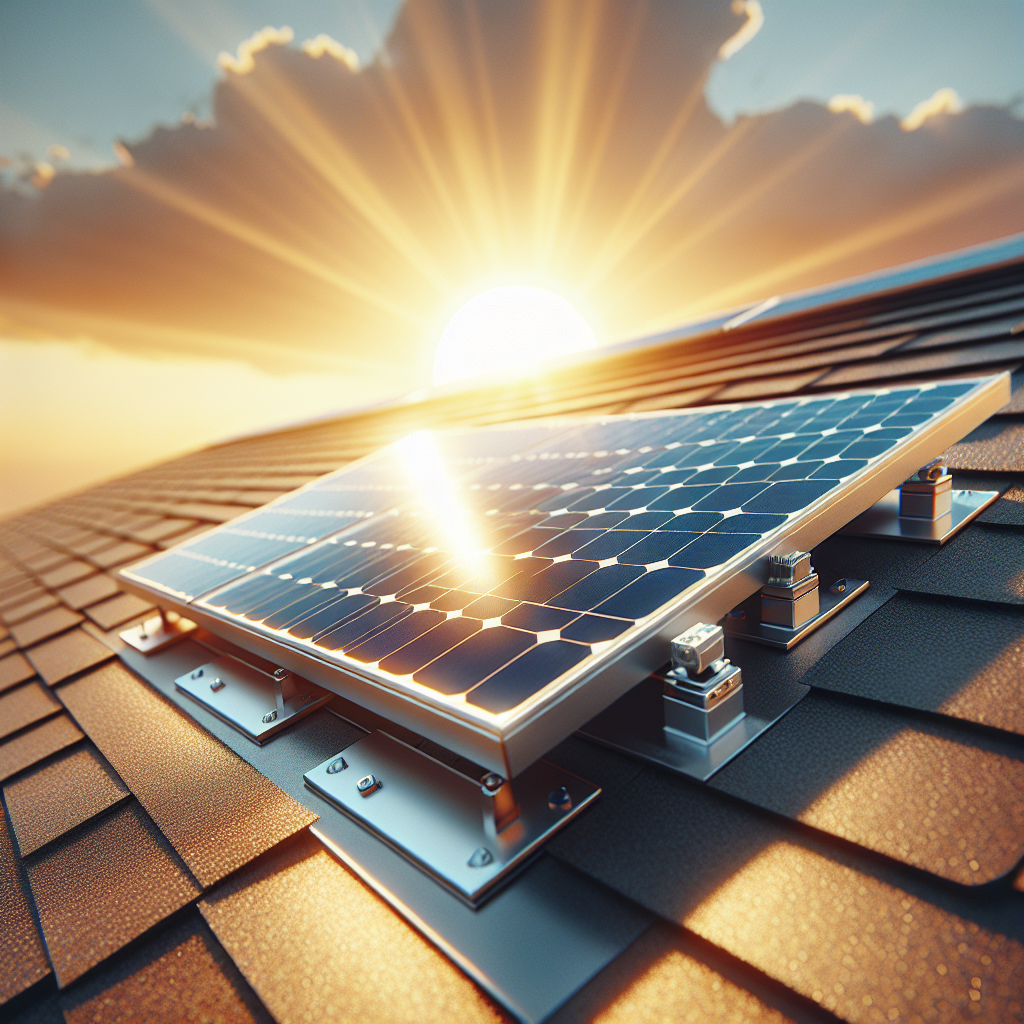How Much Energy Does A Solar Panel Produce
As an Amazon Associate, I earn from qualifying purchases, at no additional cost to you. Disclaimer
I’ve always been fascinated by the amazing capabilities of solar panels. They harness the power of the sun and convert it into electricity, often leaving us in awe of their sheer efficiency and environmental friendliness. In this enlightening piece, I’m going to demystify just how much energy a solar panel can produce. I’ll guide you through the scientific principles that underpin this renewable source of energy and shed some light on how solar panels could potentially power our homes, our vehicles, and maybe even our cities in the future.

Understanding Solar Energy
Solar energy, my friends, is an abundant, renewable, and eco-friendly power source that presents a great potential in alleviating our reliance on fossil fuels. The basic premise of harnessing solar energy is simple – convert sunlight into electricity. However, to appreciate its potential impacts on the planet and our pocket, it’s helpful to understand the core functioning of a solar energy system.
Components of Solar Energy System
A typical solar energy system primarily consists of solar panels, an inverter, a battery storage system, and a solar meter. Solar panels, which are arrays of photovoltaic cells, play the main role in capturing and converting sunlight into a form of energy called Direct Current (DC). The inverter comes into play next, converting the DC into Alternating Current (AC), a usable form of electricity. The battery storage can store excess energy produced for later use, while the solar meter measures the amount of electricity produced.
How Solar Panels Capture Energy
Solar panels work by absorbing sunlight with photovoltaic cells, which then generates a flow of electrons— essentially creating electricity. Each cell is made up of two layers of semiconductor material, with one layer designed to seize the energy packed photons from the sunlight. As these photons are absorbed by the cell, they set the electrons in motion, leading to a flow of electricity.
Conversion of Solar Energy to Usable Electricity
The electricity generated by the solar panel is in the form of direct current (DC), which on its own wouldn’t be much use for powering our homes. Hence, what we need next is an inverter. The inverter is responsible for turning DC into AC, which can now be utilized to power our daily appliances.
Factors Affecting Energy Production in Solar Panels
Solar energy production is not a constant affair. It can be influenced by various factors that either enhance or hinder the panels’ efficiency.
Effect of Sunlight Intensity
Unsurprisingly, the intensity of sunlight striking the surface of the solar panel directly affects the amount of energy it can produce. The stronger the sunlight, the more energy is produced.
Impact of Panel Position and Angle
The direction and tilt at which solar panels are mounted have a significant impact on the level of sunlight exposure, therefore affecting the overall energy output. In general, solar panels in the northern hemisphere perform optimally when facing south and tilted at an angle equal to the latitude of their location.
Role of Climate and Weather Conditions
Climate conditions such as cloud cover, fog, and precipitation can severely impede the ability of solar panels to absorb sunlight, thereby reducing the energy production. Similarly, excessively high temperatures can sometimes reduce solar panel efficiency.
Significance of Panel Size and Quality
The size and number of solar panels affect the total amount of sunlight captured and, consequently, the amount of energy produced. Additionally, the quality of solar panels influences their efficiency, with higher quality panels producing more energy per unit area.
Measuring Solar Panel Energy Output
To quantify the energy output of solar panels, we employ specific units of measurement.
Watt as the Unit for Measuring Solar Energy
Energy output from solar panels is typically measured in watts (W). This unit measures the rate of energy production at a specific moment. For example, if a panel is rated at 300W, that means under ideal conditions, the panel will produce 300W of energy per hour.
Understanding Kilowatt-Hour
A kilowatt-hour (kWh), on the other hand, represents the total amount of energy produced or consumed over an hour. So, if a 300W panel runs at its maximum capacity for 3.3 hours, it will produce about one kilowatt-hour (1 kWh) of electricity.
How to Calculate Energy Production of A Solar Panel
In practical terms, calculating the energy production of a solar panel involves multiplying its wattage by the number of peak sunlight hours in a day. Then, adjusting the result to account for factors like inefficiencies, weather conditions, and the angle of the panels.
Average Energy Output of Different Types of Solar Panels
While all solar panels serve the same purpose of generating electricity from sunlight, their construction and efficiency can vary.
Energy Output of Monocrystalline Solar Panels
Monocrystalline solar panels are considered literally the “gold standard” in the industry due to their high efficiency. They are made of single crystal structure which permits the electrons, which are responsible for electricity, to flow more easily. Consequently, their energy output is comparatively higher.
Energy Output of Polycrystalline Solar Panels
Polycrystalline solar panels differ from monocrystalline panels in the respect that they are made from many different crystals. Due to this, there’s less freedom for the electrons to move, resulting in slightly lower efficiency. However, they offer a compelling balance of cost-effectiveness and energy output.
Energy Output of Thin-Film Solar Panels
Thin-Film solar panels comprise of thin semiconductor materials deposited on a substrate. They tend to have lower efficiencies and energy output, but their lightweight, flexible nature makes them suitable for a variety of applications where traditional panels might not work.

Typical Energy Output of Residential Solar Panels
When it comes to residential solar panels, there are different factors to consider in terms of energy output.
Size and Capacity of Residential Solar Panels
Most residential solar panels are about 65 inches by 39 inches in size, and on average, can produce between 250-400 Watts per panel under perfect conditions.
Calculating Daily and Annual Energy Output of Residential Solar Panels
The daily and annual energy output of a solar panel can be calculated by multiplying its wattage by the number of peak sunlight hours in a day or a year. However, be sure to consider factors such as weather conditions and panel orientation for a more accurate estimation.
Impact of Seasonal Variations on Energy Output
The seasonal variations, especially changes in day length and sunlight intensity, can significantly impact the energy output of residential solar panels. Typically, panels produce more energy in summer months than winter months due to longer daylight hours and stronger sunlight.
Commercial Solar Panel Energy Output
In commercial settings, solar panels are often chosen and arranged differently than in residential cases.
Size and Capacity of Commercial Solar Panels
Commercial solar panels tend to be larger in size to capture more sunlight and hence, produce more energy. They typically range from 330W to 455W per panel, giving businesses a greater energy output to meet their larger energy needs.
Calculating Daily and Annual Energy Output of Commercial Solar Panels
Much like residential panels, the energy output of commercial solar panels can be estimated by multiplying the wattage by the average number of sunlight hours per day/year and adjusting for efficiency and conditions.
Efficiency of Commercial Solar Panels Vs Residential Panels
Commercial and industrial panels are, on average, just slightly more efficient than residential panels, but the real efficiency comes from the scale of installation. Large commercial rooftops or solar farms can accommodate a large array of panels, generating a significant amount of energy.

Predicting Solar Panel Energy Output Over Time
While solar panels are designed for longevity, their performance can degrade over time, affecting their energy output.
Typical Lifespan of a Solar Panel
A high-quality solar panel has a lifespan of 25-30 years. They don’t stop producing electricity after this time, but their energy production will decrease significantly.
Decline in Output Over Time Due to Degradation
Degradation refers to the gradual decline in the efficiency of solar panels. The rate of degradation can vary depending on the quality of the panel, but on average, a solar panel’s output may degrade at about 0.5% to 1% per year.
How Maintenance and Care Impact Energy Output
Regular maintenance and cleaning are critical to maintain optimal energy production. Accumulated dirt or dust can block sunlight, while minor damages can hinder the panel’s ability to convert sunlight into energy.
Maximizing Solar Panel Energy Production
There are various ways to enhance the productivity of your solar panels.
Optimal Placement of Solar Panels for Maximum Energy Capture
Placing panels in a location with clear access to sunlight and setting them at an angle that will maximize their exposure to the sun can help increase energy capture.
Use of Solar Trackers
Solar trackers are devices that orient the solar panels toward the sun throughout the day enhancing the amount of sunlight they receive, and by extension, their energy output.
Importance of Regular Maintenance and Cleaning
Regular cleaning of solar panels ensures that accumulated dust or debris do not hinder the panel’s access to sunlight, while periodic inspections and maintenance can help to address any issues that might affect energy production.

Economic and Environmental Impact of Solar Panels
Solar panels carry both economic and environmental benefits that warrant their significance in our pursuit of green energy solutions.
Savings and Return on Investment from Solar Panels
By producing your own electricity, solar panels can significantly reduce your utility bills. Plus, with lower costs and numerous financing options available, you can expect to see return on investments in no time.
Environmental Benefits of Using Solar Energy
By not burning fossil fuels, solar panels reduce emissions of harmful greenhouse gases. Moreover, they require less water for production and operation compared to traditional energy sources.
Contribution of Solar Energy in Achieving Renewable Energy Goals
By increasing the use of solar energy, we can fulfill a substantial portion of our electricity needs through renewable resources – reducing dependency on fossil fuels and moving towards a more sustainable future.
Future of Solar Energy and Potential Improvements in Energy Output
Advancements in technology and growing recognition of solar power‘s value promise an improved future for solar energy.
Development of More Efficient Solar Panel Technology
Ongoing research into materials and designs promise a new generation of solar panels that are significantly more efficient in transforming sunlight into electricity.
Reducing Costs and Increasing Accessibility
Further refinements in manufacturing processes and economies of scale can make solar panels even more affordable in the future – encouraging wider adoption.
Predicted Increase in Solar Energy Adoption in Future
With increased public awareness about the environmental impacts of fossil fuels and the economic benefits of solar energy, the adoption of solar panels is set to increase in the future.
So there you have it! Understanding and maximizing solar energy is not just an exciting experiment, but a sustainable journey that drives us towards a greener future. And while the amount of energy a solar panel produces can depend on numerous factors, the good news is that we can control many of these to ensure we’re harnessing this renewable energy source to its utmost capacity. As advancements in solar technology continue, our reliance on solar energy will only keep growing.





